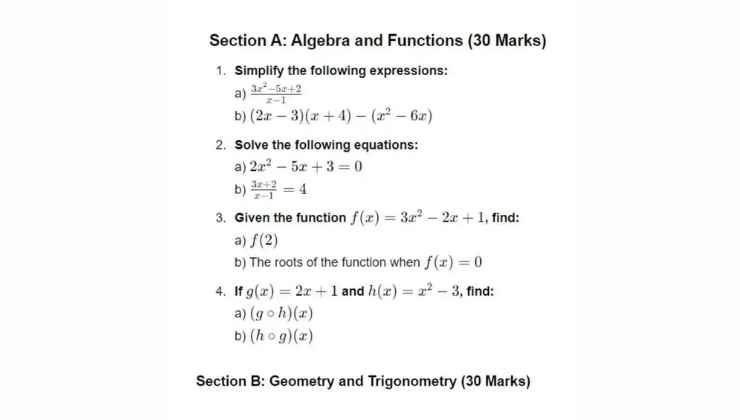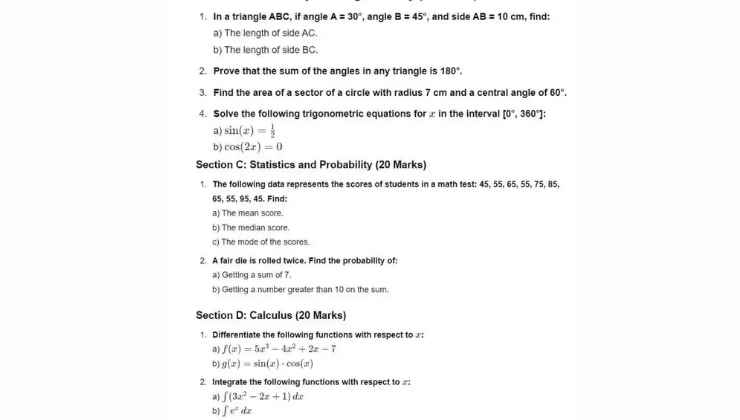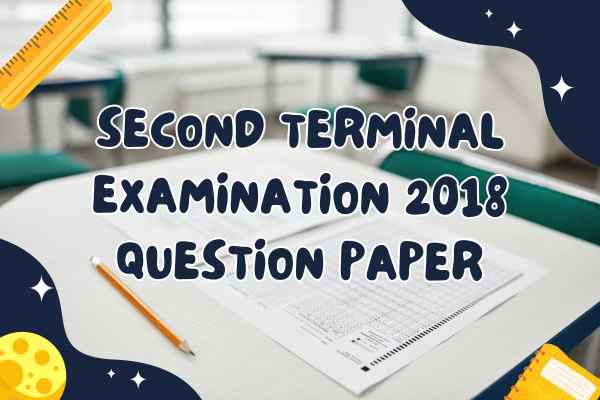Second Term Maths Question Paper | Preparation Tips & Key Topics

Mid-year math exams are significant for students’ academic progress as they test the knowledge acquired during the first half of the school year. This detailed guide will cover the content found in the Second Term Maths Question Paper and advise on adequate preparation and strategies for achieving success in exams.
Introduction to Second Term Maths Question Papers
The second-term math question paper evaluates students’ grasp of mathematical concepts they’ve studied during the term. It’s an important exam that typically covers various topics, including algebra, geometry, trigonometry, statistics, and calculus, depending on the academic level.
Understanding the structure and the types of questions asked can significantly help prepare effectively. Whether you’re a student or a teacher looking to guide your class, having a solid idea of what to expect in these exams is crucial.
Structure and Format of the Paper


Typically, a second-term math question paper follows a structured format. It is divided into sections, with each section focusing on different types of questions. Common formats include:
- Multiple-choice questions (MCQs): These assess quick thinking and basic problem-solving skills.
- Short answer questions: These questions usually cover key concepts and require concise answers.
- Long-form problems: In this section, students must demonstrate their in-depth understanding of complex mathematical concepts and provide step-by-step solutions.
Most papers also include difficulty levels, from easy questions testing basic skills to more challenging problems aimed at high achievers.
Key Topics Covered in the Second Term
The topics in the second term maths question paper vary depending on the syllabus followed by the institution. However, here are some common issues for different grade levels:
For Lower Grades (Grade 6-8):
- Introductory Algebra: Simple equations, factorization, and algebraic expressions.
- Geometry: Understanding shapes, angles, and the properties of circles, triangles, and quadrilaterals.
- Data Handling: Introduction to statistics, interpreting bar graphs, pie charts, and calculating mean, median, and mode.
For Higher Grades (Grade 9-12):
- Advanced Algebra: Quadratic equations, polynomials, and progressions.
- Trigonometry: Understanding trigonometric identities, solving triangles, and using sine and cosine rules.
- Calculus: Basics of differentiation and integration for Grade 12 students.
- Probability and Statistics: More advanced concepts like standard deviation and probability distributions.
Each academic level builds on the foundation laid in earlier terms, so it is important to review the syllabus and the topics covered in previous exams.
Tips for Preparing for the Exam
Preparing for the second term maths exam requires a strategic approach:
- Review the syllabus: Ensure you are familiar with the topics covered in your grade. Prioritize areas where you’re weaker.
- Practice regularly: Math is a subject that requires consistent practice. Solve previous question papers and sample problems.
- Understand the concepts: Don’t just memorize formulas. Make sure you understand the underlying concepts and how to apply them.
- Use study guides and tutorials: Reference textbooks, online tutorials, and maths guides that explain concepts step by step.
- Work on time management: Time yourself during your practice sessions. This will help you manage time during the actual exam.
How to Solve a Maths Question Paper Effectively
It’s crucial to approach the exam strategically:
- Start with easy questions: To build confidence and save time, begin with the questions you find easiest.
- Show your work: In long-answer questions, always show the steps you take to solve a problem. It helps you get partial credit even if the final answer is wrong.
- Double-check your work: Once you’ve completed the paper, review your answers. Look for any mistakes, especially in calculations.
- Allocate time wisely: Save time on one question. If you’re stuck, move on and come back to it later if time permits.
Conclusion
In a crafted second term math test paper evaluates a students grasp of mathematical ideas and problem solving skills effectively ensuring students success in exams by comprehending the format, understanding crucial subjects and preparing adequately using appropriate materials.








